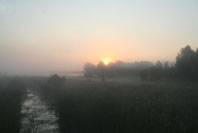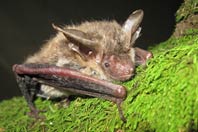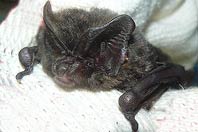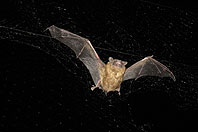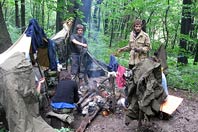Inventory and monitoring of summer bat
populations |
||||||||||||||||||||||||||||||||||||||||||||||||||||||||||||||||||||||||||||||||||||||||||||||||||||||||||
Introduction Bats (Chiroptera) are one of the most numerous mammalian order, bats have high conservation status and most of the species are considered to be rare and endangered animals. In West Europe countries bats are recognized as valuable indicators of nature ecosystems conditions (e.g., look here and here). Like all groups of threatened species bats need clear assessment of changes taking place in their population, and it can be done via monitoring including estimation of some quantitative population parameters. There are mainly two approaches of monitoring programs which are applied in the world: acoustic monitoring, using bat detectors and visual monitoring with regular survey of potential summer and winter roosts of bats. But these methods are remote techniques and provide only fragmentary data about bat number and relative abundance at present moment, without data on the population structure. Winter surveys in hibernacula sites are more often used method in Ukraine. Unitized and standardized conception of summer bat population monitoring in Ukraine appears to be undeveloped. Bat species composition and structure of assemblage are still unknown at many nature protected territories of Ukraine.
Background The program of inventory and monitoring of bats was started in 2008 on the territory of National Nature Park (NNP) “Gomolshanskie lisy” (Kharkov region), for which 10 bat species were known. 
We compared data on effectiveness of different methods of bat survey (mist net, plastic trap, ultrasound detector) which were used in NNP «Gomolshansky lisy» during 1999–2007. We revealed that the most effective method for the study of species composition and population structure of bats was mist net capture. We decided to check if it is possible to reveal all known bat species for this territory in a short period of time (in July) using standardized scheme of mist nets capture. July is the best month for primary inventory because young bats begin to fly but the autumn migration hasn’t started yet. And it was successfully realized; we obtained 504 specimens of all 10 known bat species during only two weeks of the mist netting.
Results and the essence of the method The essence of method of inventory is two successive series of capture of bats with using of mist nets on the territory approximately 400-500 ha. Both series should be conducted in July at ten mist net points in typical for the study site biotopes. Primary inventory (revealing of all of these parameters, see below) is a first step to further monitoring of bat populations. After repeated inventory at the same research territory 3-4 years later we could obtain information about temporal changes of these parameters and thus realize monitoring of summer bat population on the given territory.
At the moment the primary inventory of summer bat population was conducted at five study sites (tab. 1), four of them on the territory of Ukraine and one in Russia.
Table 1
We received data on 16 bat species (tab.2) and 1869 bats were captured during the research work. All captured bats from three out of five study sites were ringed and obtained data were given to Ukrainian ringing center (Kiev, Ukraine).
Table 2 The list of all involved in the present project species of bats (2008-2010) and their status
«+» - bat species involved in the system of inventory and monitoring, «++» – mass indicator species.
Parameters for future summer monitoring of bats:
Participants and executors Interdepartmental research laboratory “Study of biodiversity and development of nature reserve management”, Kharkov.. Program coordinators Participants
The main scientific publication on the project results Vlaschenko A.S., Gukasova A.S. Development of method for the inventory of species composition and population structure of Chiroptera // Nature reserves in Ukraine. – 2009. – Vol.15, issue 1. – P. 49–57. Gukasova A., Vlaschenko A. Bat fauna primary inventory and monitoring using mist nets // Abstr. of the 15th International Bat Research Conference (Prague, 23 – 27 August 2010). Prague: 2010. – P. 157. Vlaschenko A.S., Gukasova A.S. Bat (Chiroptera) fauna and structure of assemblage of projecting protected area “Yaremovskoe” (Kharkov region) // Nature reserves in Ukraine Vol.16, issue 1. – P. 44–50. Buchko V., Vlaschenko A., Kravchenko K., Sudakova
M., Gukasova A., Kusnezh A. Contribution to bat fauna (Chiroptera)
of Galytskiy National Nature Park (Ivano-Frankivsk region) // Visnyk
of Lviv University. Biology series. – 2011. issue. 55. – P. 146-159.
Popular publications http://www.naturalist.if.ua/?p=4269#more-4269.
Financial support The research activity in 2010 was supported by Bat Conservation International and Sigma Xi.
Prepared by A. Gukasova and A. Vlaschenko
|
||||||||||||||||||||||||||||||||||||||||||||||||||||||||||||||||||||||||||||||||||||||||||||||||||||||||||
09.04.2011 |
||||||||||||||||||||||||||||||||||||||||||||||||||||||||||||||||||||||||||||||||||||||||||||||||||||||||||
